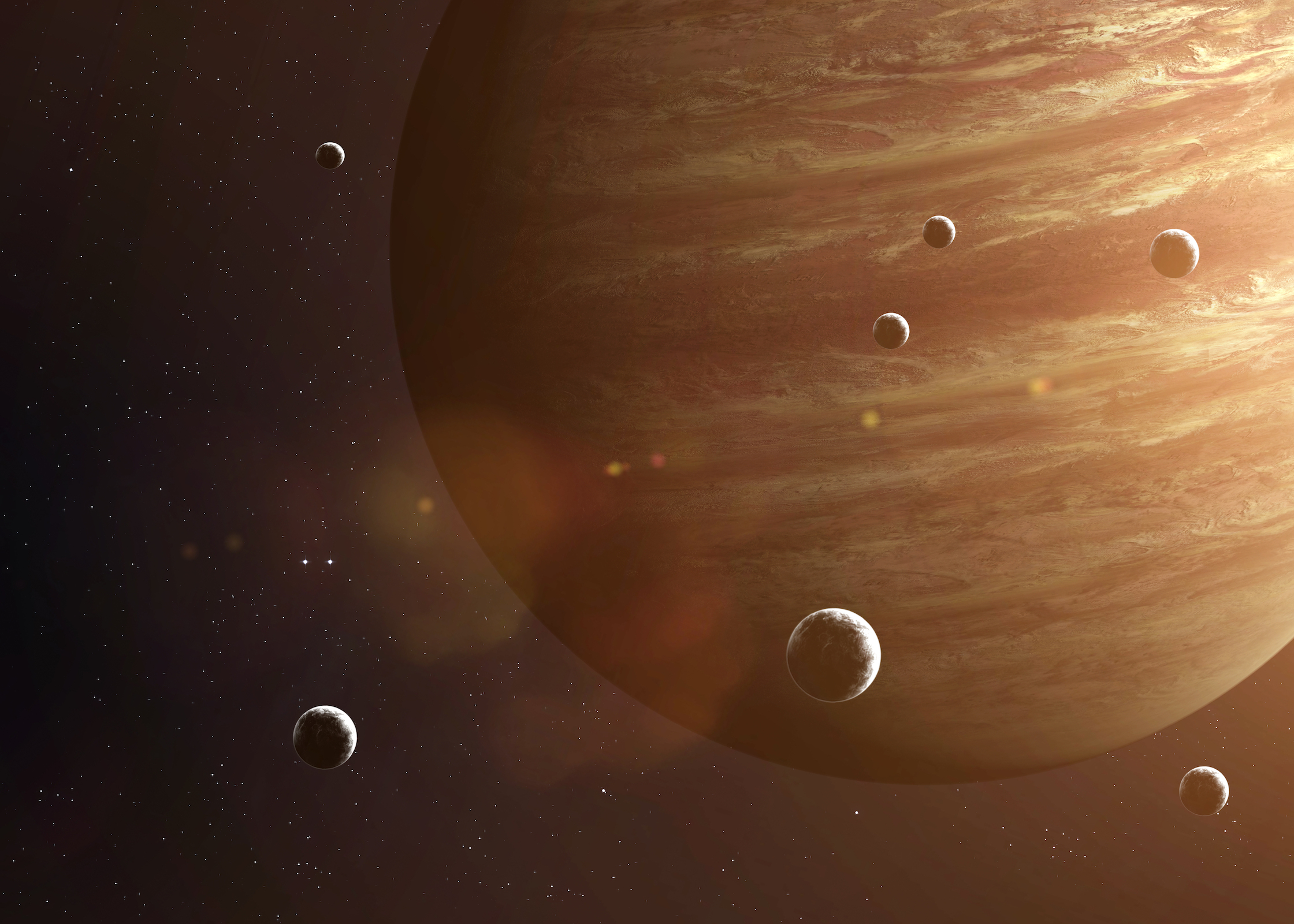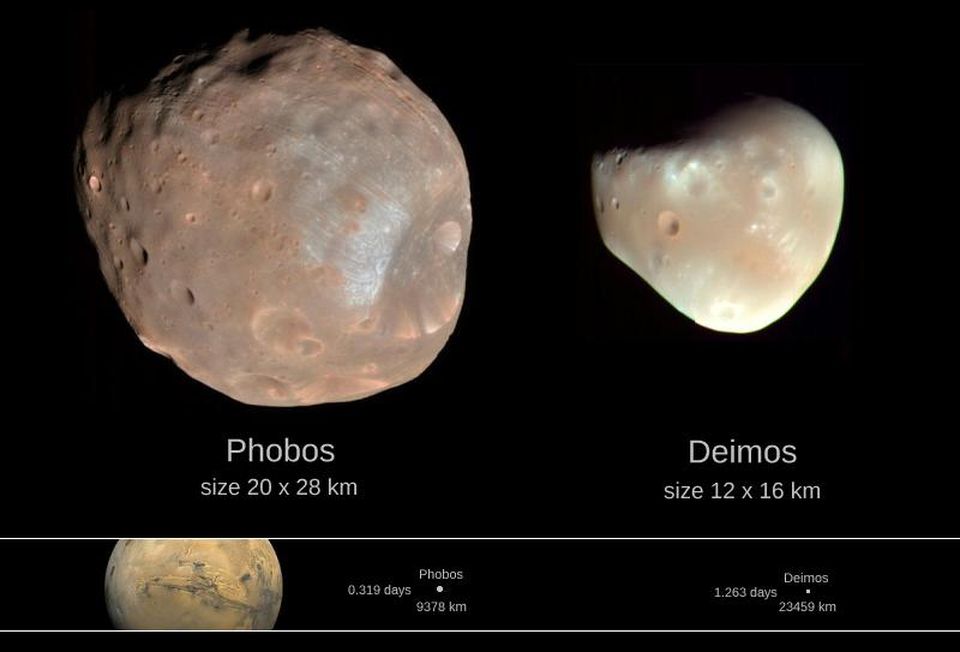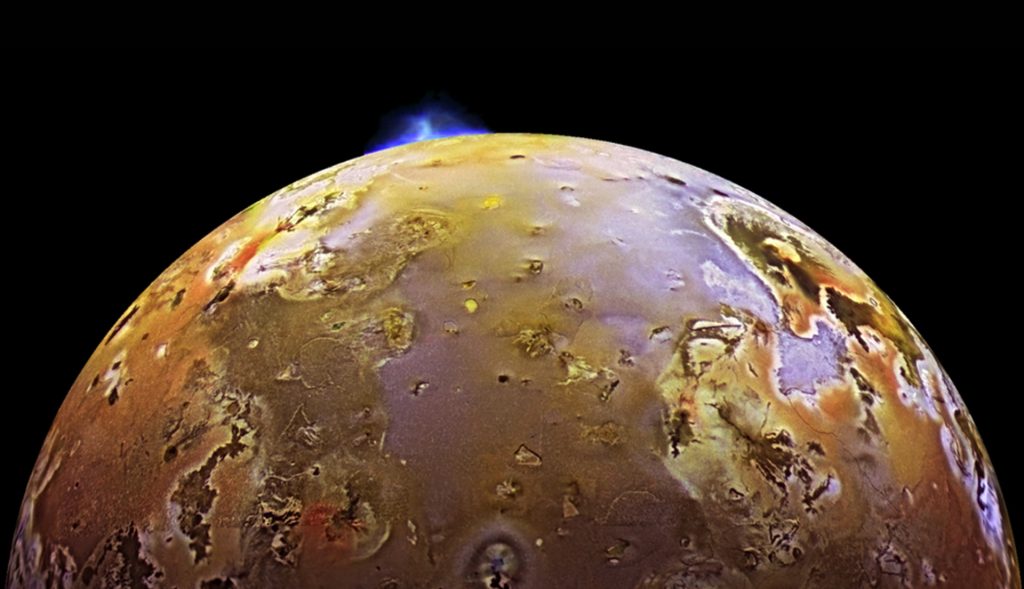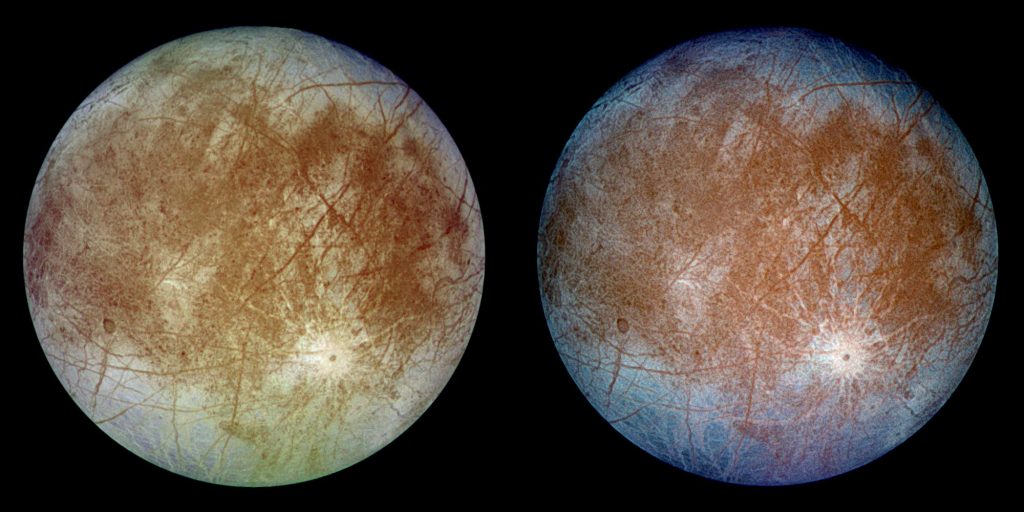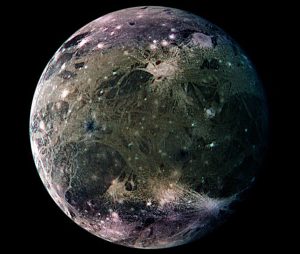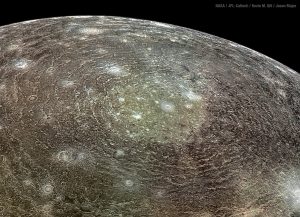Since we were little kids, we have learned a lot of things about our solar system. Planets, satellites, asteroids, comets are not strange words for us. Out of these, “Planets” is the most referred subject of many. The majestic rings of Saturn, the giant red spot of Jupiter, sizzling temperatures of Venus, ancient canals in Mars, and many other things are not novel to many of us. So, this account is not about the things you hear every day about our solar system. This is about the unique and wondrous “Moons” in our solar system.
Moons of the Terrestrial Planet system
Terrestrial planets are the small and rocky planets in our solar system. Out of the four terrestrial planets moons are possessed by only Earth and Mars. The Earth-Moon system has been dealt with numerous times over all these years. So, it is time to know more about the moons of Mars.
Scientific studies have claimed that the terrestrial planets are equipped with moons in a different way than the Jovian Planets. The two moons of Mars are said to be either two captured asteroids from the nearby Main Asteroid Belt in our solar system or evolved with Mars itself. These moons are called Phobos and Deimos. Named after the two sons of the Roman god of war, Mars. The two names mean Fear and Panic.
Both these moons are irregular-shaped. Which means they are not spherical. Both are also said to be tidally locked with Mars. Which means one hemisphere of the moon is always facing Mars.
Out of the two moons, Phobos is the larger one. It is the closest moon to its planet in the solar system. It is so close that it orbits Mars faster than Mars’ rotation. If we were on Mars, we’ll be able to watch Phobos Rise in the sky twice a day.
Deimos is said to have a smoother surface than Phobos because there are fewer craters in it.
Moons of the Jovian Planet System
Moons of Jupiter
Moons of Jupiter are unarguably the most popular moons in the solar system. More than 60 more moons orbiting Jupiter have been found since the discovery of the 4 largest moons of Jupiter by Galileo Galilei. Here, only the Galilean moons are highlighted.
Jupiter and its moons are like an imitation of the solar system. Even their origin is like the origin of the solar system. The moons of all Jovian planets have been formed by smaller accretion disks around the planets. This results in the formation of moons in the order of descending densities from the planet which depicts the same order of planets from the sun.
Io, Europa, Ganymede, Callisto are the four Galilean moons in the order from Jupiter. Same as the other moons, these four moons are named after the mythical attendants and servants of Roman god Jupiter, the king of the gods.
Ganymede, Europa, and Io have synchronous orbits in 1:2:4 ratio. That means Europa orbits twice per each revolution of Ganymede and Io orbits four times for each revolution of Ganymede. This is known as orbital resonance. Following most of the moons in the solar system, all the Galilean moons are also tidally locked with Jupiter.
Io
Io, the first moon from Jupiter is a reddish yellow sphere when viewed from space and is slightly larger than our Moon. Io is the most geologically active object in the entire solar system. The Voyager, Galileo, and New Horizon spacecraft and the Keck telescope have observed hundreds of volcanic vents and active volcanoes on Io. The largest volcano on Io, named Loki, is said to release more energy than all the volcanic activity on earth combined. Due to constant lava flow, Io is almost free of craters and has a smooth surface. Due to the enormous gravity of Jupiter and intense volcanic activity, Io’s mantle is said to have turned inside out numerous times. Io has a thin atmosphere made out of Sulfur Dioxide from the fumes released by volcanoes.
Europa
Europa is slightly smaller than our Moon. It is one of the most popular science fiction objects. The thick water-ice crust of Europa has led to many conspiracy theories due to the belief that it might have the capability to support life. Shattered-glass like cracks covers the Europa surface which implies that there is geological activity on Europa. Detailed computer models of the interior of Europa suggest that Europa has a global ocean 100 km deep that contains more water than all of Earth’s oceans combined. It has also found that Europa possesses a variable magnetic field.
Ganymede
Ganymede is the biggest natural satellite in the entire solar system. Ganymede is said to be a formerly active moon, implying that no geological activities are happening in or out of the Ganymede surface. Its surface is composed of two prominent terrains: a dark, heavily cratered (and therefore ancient) terrain, and a bright terrain characterized by ridges and grooves. Scientists believe that Ganymede might have a large, salty ocean underneath its icy surface, maybe 800 km deep, containing 25 times the volume of Earth’s oceans.
Ganymede has its own magnetic field inside the larger magnetosphere of Jupiter. It also has a strong gravitational field.
Callisto
Calisto is the third-largest moon in the solar system, just slightly smaller than Mercury. Callisto is considered as a geologically dead moon, which means there is little or no evidence of internal activity having occurred at any time since its formation. It is also the darkest of the Galilean moons of Jupiter, yet it is still twice as reflective as the Earth’s Moon. This brightness indicates that Callisto is rich in water, ice, but with a mixture of dark, rocky materials. The crater Valhalla on Callisto is the largest multi-ringed basin in the solar system.
-By Sathira Deegala-
References:
- 21st-Century Astronomy by Kay, Palen, Blumenthal (5th edition), Chapter 11: subchapters 11.1,11.2, Chapter 12: subchapter 12.2
- Astronomy – A Beginners Guide to Universe by Chaison and McMillan (8th edition), Chapter 8: subchapters 8.1, 8.2, 8.3
- Foundations of Astronomy by Seeds and Backman (13th edition), Part 5: Chapters 22, 23, 24
Image Courtesy:
- Title Image:https://bit.ly/3drS9W0
- https://bit.ly/35mTLxp
- https://bit.ly/3eB0xmE
- https://bit.ly/2MbCVsO
- https://bit.ly/2XNQOme
- https://bit.ly/3gAxXnk

